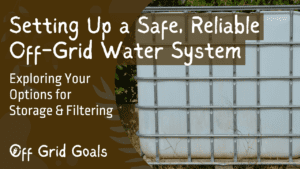Hydroponic gardening has taken the world by storm, offering a soil-free, efficient way to grow plants with minimal water usage. But with so many hydroponic systems out there, how do you choose the best one for you? Let’s take a deep dive into the different types of hydroponic systems and explore what makes each one unique.

Deep Water Culture (DWC):
- How it Works: In a DWC system, plants are suspended in a nutrient solution with their roots submerged in water. An air pump provides oxygen to the roots, promoting healthy growth.
- Pros: Simple setup, low maintenance, and suitable for growing a wide variety of plants.
- Cons: Not ideal for large plants or those with long growing cycles. Requires monitoring of water levels and pH.

Nutrient Film Technique (NFT):
- How it Works: NFT systems use a continuous flow of nutrient solution that flows over the roots of plants, providing nutrients while also oxygenating them.
- Pros: Efficient water usage, good for growing leafy greens and herbs, and easily scalable for larger setups.
- Cons: Prone to clogging and may require regular maintenance. Not suitable for larger, fruit-bearing plants.

Ebb and Flow (Flood and Drain):
- How it Works: Ebb and flow systems use a timer to flood the growing tray with nutrient solution before draining it away, allowing the roots to absorb nutrients and oxygen.
- Pros: Versatile, suitable for a wide range of plants, and customizable to fit different growing needs.
- Cons: Requires a timer and may be prone to power outages or mechanical failures. Can be more labor-intensive compared to other systems.

Aeroponics:
- How it Works: Aeroponic systems mist the roots of plants with a nutrient solution, allowing them to absorb nutrients and oxygen directly from the air.
- Pros: Efficient water usage, promotes rapid growth, and ideal for growing plants with short growing cycles.
- Cons: Requires more technical knowledge and maintenance, as well as regular monitoring of nutrient levels and pH.

Drip Systems:
- How it Works: Drip systems deliver a controlled amount of nutrient solution directly to the base of each plant using drip emitters or tubing.
- Pros: Precise control over nutrient delivery, suitable for a wide range of plants, and easy to automate.
- Cons: Prone to clogging and may require regular maintenance. Can be less efficient with water usage compared to other systems.
Choosing the best hydroponic system for you ultimately depends on your specific needs, preferences, and level of experience. If you’re a beginner looking for a low-maintenance option, a Deep Water Culture system might be your best bet. On the other hand, if you’re a seasoned gardener looking to grow a variety of plants with maximum efficiency, an Aeroponic system could be the way to go.
No matter which hydroponic system you choose, one thing’s for sure—you’ll be well on your way to growing a bountiful harvest of fresh, nutritious produce right in the comfort of your own home. Happy growing!



















